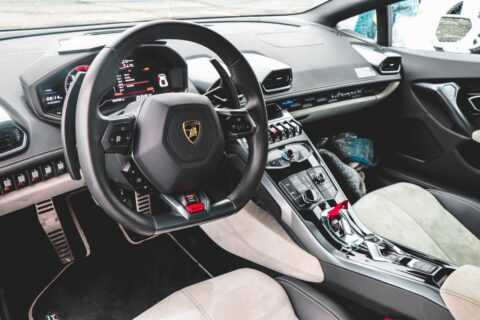In the burgeoning urban landscapes, the quest for efficient mobility is more pronounced than ever. With the urban populace on the rise, the strains on transportation networks are becoming evident. The push towards creating sustainable, efficient, and accessible urban mobility solutions is not just a matter of convenience, but a crucial step towards reducing carbon footprints and enhancing the quality of urban life. The spotlight is now on two pivotal players in this narrative: compact city cars and revitalized public transport.
Compact City Cars: Driving Towards Sustainability
Compact city cars, with their minimalistic design and eco-friendly propulsion systems, are emerging as the darlings of urban mobility. These vehicles are tailored for the narrow, bustling streets of the city, aiming to reduce congestion and emissions. Electric and hybrid city cars are leading the charge, offering a blend of fuel efficiency and reduced carbon emissions. Innovations like autonomous driving technology and smart parking solutions further augment the appeal of compact city cars, making urban commuting less stressful and more sustainable.
Public Transport: The Backbone of Urban Mobility
Public transport forms the lifeblood of urban mobility, ferrying masses across the city in a cost-effective and relatively eco-friendly manner. The push for modernized, efficient public transport systems is palpable. Cities are investing in electric buses, light rail systems, and bike-sharing programs to provide a myriad of transportation options. The integration of smart technologies is further streamlining operations, making public transport more reliable and user-friendly. Real-time tracking, mobile ticketing, and integrated payment systems are just a few advancements ushering public transport into a new era of efficiency.
The Interplay: Creating a Cohesive Urban Mobility Ecosystem
The synergy between efficient city cars and modernized public transport can create a robust urban mobility ecosystem. Initiatives like dedicated lanes for buses and bicycles, car-sharing programs, and the development of multi-modal transit hubs are bridging the gap between personal and public transportation. This integrated approach aims to promote a shift towards more sustainable commuting habits, encouraging urban dwellers to opt for the most efficient mode of transport based on their needs.
Conclusion
The urban mobility narrative is evolving, with a clear push towards creating sustainable and efficient transportation solutions. The embrace of compact city cars and the revitalization of public transport systems are significant steps towards alleviating urban congestion and fostering a greener urban existence. The journey towards seamless urban mobility is a collaborative endeavor, necessitating the involvement of policymakers, urban planners, and the community at large. Together, we can steer towards a future where moving through the city is a breeze, not a bottleneck.
This article underscores the importance of advancing urban mobility solutions to meet the demands of growing urban populations. By highlighting the roles of compact city cars and modernized public transport systems, it explores the potential for creating a cohesive, sustainable urban mobility ecosystem. Through investments in technology and infrastructure, and with a collective push towards sustainability, cities can pave the way for a more efficient and eco-friendly urban mobility landscape.






